ANALYSIS OF
ELECTRIC MACHINERY
AND DRIVE SYSTEMS
�
IEEE Press
445 Hoes Lane
Piscataway, NJ 08854
IEEE Press Editorial Board 2013
John Anderson, Editor in Chief
Linda Shafer
George W. Arnold
Ekram Hossain
Om P. Malik
Saeid Nahavandi
David Jacobson
Mary Lanzerotti
George Zobrist
Tariq Samad
Dmitry Goldgof
Kenneth Moore, Director of IEEE Book and Information Services (BIS)
A complete list of titles in the IEEE Press Series on Power Engineering
appears at the end of this book.
�
ANALYSIS OF
ELECTRIC MACHINERY
AND DRIVE SYSTEMS
THIRD EDITION
Paul Krause
Oleg Wasynczuk
Scott Sudhoff
Steven Pekarek
IEEE PRESS
�
Copyright © 2013 by Institute of Electrical and Electronics Engineers, Inc. All rights reserved.
Published by John Wiley & Sons, Inc., Hoboken, New Jersey.
Published simultaneously in Canada.
No part of this publication may be reproduced, stored in a retrieval system, or transmitted in any form or
by any means, electronic, mechanical, photocopying, recording, scanning, or otherwise, except as
permitted under Section 107 or 108 of the 1976 United States Copyright Act, without either the prior
written permission of the Publisher, or authorization through payment of the appropriate per-copy fee to
the Copyright Clearance Center, Inc., 222 Rosewood Drive, Danvers, MA 01923, (978) 750-8400, fax
(978) 750-4470, or on the web at www.copyright.com. Requests to the Publisher for permission should be
addressed to the Permissions Department, John Wiley & Sons, Inc., 111 River Street, Hoboken, NJ 07030,
(201) 748-6011, fax (201) 748-6008, or online at http://www.wiley.com/go/permissions.
Limit of Liability/Disclaimer of Warranty: While the publisher and author have used their best efforts in
preparing this book, they make no representations or warranties with respect to the accuracy or
completeness of the contents of this book and specifi cally disclaim any implied warranties of
merchantability or fi tness for a particular purpose. No warranty may be created or extended by sales
representatives or written sales materials. The advice and strategies contained herein may not be suitable
for your situation. You should consult with a professional where appropriate. Neither the publisher nor
author shall be liable for any loss of profi t or any other commercial damages, including but not limited to
special, incidental, consequential, or other damages.
For general information on our other products and services or for technical support, please contact our
Customer Care Department within the United States at (800) 762-2974, outside the United States at (317)
572-3993 or fax (317) 572-4002.
Wiley also publishes its books in a variety of electronic formats. Some content that appears in print may
not be available in electronic formats. For more information about Wiley products, visit our web site at
www.wiley.com.
Library of Congress Cataloging-in-Publication Data:
Analysis of electric machinery and drive systems / Paul Krause, Oleg Wasynczuk, Scott Sudhoff, Steven
Krause, Paul C.
Pekarek. – Third edition.
1. Electric machinery.
Steven.
TK2181.K72 2013
621.31'042–dc23
Printed in the United States of America.
10
9
8
7
6
5
4
3
2
1
pages cm
“Institute of Electrical and Electronics Engineers.”
Includes bibliographical references and index.
ISBN 978-1-118-02429-4 (cloth)
IV. Institute of Electrical and Electronics Engineers.
2. Electric driving.
I. Wasynczuk, Oleg.
II. Sudhoff, Scott D.
III. Pekarek,
V. Title.
2012050394
�
CONTENTS
Preface
1 THEORY OF ELECTROMECHANICAL ENERGY CONVERSION
Introduction
1.1.
1.2. Magnetically Coupled Circuits
1.3. Electromechanical Energy Conversion
1.4. Elementary ac Machines
Reference
Problems
2 DISTRIBUTED WINDINGS IN AC MACHINERY
Introduction
2.1.
2.2. Describing Distributed Windings
2.3. Winding Functions
2.4. Air-Gap Magnetomotive Force
2.5. Rotating MMF
2.6.
2.7. Resistance
2.8. Voltage and Flux Linkage Equations for Distributed
Flux Linkage and Inductance
Winding Machines
Reference
Problems
3 REFERENCE-FRAME THEORY
3.1.
Introduction
3.2. Background
3.3. Equations of Transformation: Change of Variables
3.4.
Stationary Circuit Variables Transformed to the Arbitrary
Reference Frame
3.5. Commonly Used Reference Frames
xiii
1
1
1
12
35
44
44
53
53
54
64
67
71
73
76
77
83
84
86
86
87
88
90
97
v
�
vi
CONTENTS
3.6. Transformation of a Balanced Set
3.7. Balanced Steady-State Phasor Relationships
3.8. Balanced Steady-State Voltage Equations
3.9. Variables Observed from Several Frames of Reference
3.10. Transformation Between Reference Frames
3.11. Specialty Transformations
3.12. Space-Phasor Notation
References
Problems
4 PERMANENT-MAGNET AC MACHINES
Introduction
4.1.
4.2. Voltage and Torque Equations in Machine Variables
4.3. Voltage and Torque Equations in Rotor Reference-Frame
Variables
4.4. Analysis of Steady-State Operation
4.5. Brushless dc Motor
4.6.
Phase Shifting of Applied Voltages of a Permanent-Magnet
ac Machine
4.7. Control of Stator Currents
References
Problems
5 SYNCHRONOUS MACHINES
Introduction
Stator Voltage Equations in Arbitrary Reference-Frame Variables
5.1.
5.2. Voltage Equations in Machine Variables
5.3. Torque Equation in Machine Variables
5.4.
5.5. Voltage Equations in Rotor Reference-Frame Variables
5.6. Torque Equations in Substitute Variables
5.7. Rotor Angle and Angle Between Rotors
5.8.
5.9. Analysis of Steady-State Operation
5.10. Stator Currents Positive Out of Machine: Synchronous
Per Unit System
Generator Operation
5.11. Computer Simulation
References
Problems
98
99
102
105
110
111
113
115
115
121
121
122
125
127
129
134
138
140
140
142
142
143
149
149
151
157
158
159
160
171
201
210
210
�
CONTENTS
6 SYMMETRICAL INDUCTION MACHINES
Introduction
6.1.
6.2. Voltage Equations in Machine Variables
6.3. Torque Equation in Machine Variables
6.4. Equations of Transformation for Rotor Circuits
6.5. Voltage Equations in Arbitrary Reference-Frame Variables
6.6. Torque Equation in Arbitrary Reference-Frame Variables
6.7. Commonly Used Reference Frames
6.8.
6.9. Analysis of Steady-State Operation
6.10. Free Acceleration Characteristics
6.11. Free Acceleration Characteristics Viewed from Various
Per Unit System
Reference Frames
6.12. Dynamic Performance During Sudden Changes in Load Torque
6.13. Dynamic Performance During a Three-Phase Fault at
the Machine Terminals
6.14. Computer Simulation in the Arbitrary Reference Frame
References
Problems
7 MACHINE EQUATIONS IN OPERATIONAL IMPEDANCES
AND TIME CONSTANTS
7.1.
7.2.
7.3. Operational Impedances and G( p) for a Synchronous Machine
Introduction
Park’s Equations in Operational Form
with Four Rotor Windings
Standard Synchronous Machine Reactances
7.4.
7.5.
Standard Synchronous Machine Time Constants
7.6. Derived Synchronous Machine Time Constants
7.7.
7.8.
References
Problems
Parameters from Short-Circuit Characteristics
Parameters from Frequency-Response Characteristics
8 ALTERNATIVE FORMS OF MACHINE EQUATIONS
Introduction
8.1.
8.2. Machine Equations to Be Linearized
8.3. Linearization of Machine Equations
vii
215
215
216
220
222
224
229
232
233
235
244
251
257
260
261
266
267
271
271
272
273
276
278
278
283
290
295
297
299
299
300
302
�
viii
CONTENTS
8.4.
Small-Displacement Stability: Eigenvalues
8.5. Eigenvalues of Typical Induction Machines
8.6. Eigenvalues of Typical Synchronous Machines
8.7. Neglecting Electric Transients of Stator Voltage Equations
8.8.
Induction Machine Performance Predicted with Stator
Electric Transients Neglected
Synchronous Machine Performance Predicted with Stator
Electric Transients Neglected
8.9.
8.10. Detailed Voltage Behind Reactance Model
8.11. Reduced Order Voltage Behind Reactance Model
References
Problems
9 UNBALANCED OPERATION AND SINGLE-PHASE INDUCTION
MACHINES
9.1.
9.2.
9.3.
9.4. Unbalanced Stator Conditions of Induction Machines:
Introduction
Symmetrical Component Theory
Symmetrical Component Analysis of Induction Machines
Reference-Frame Analysis
9.5. Typical Unbalanced Stator Conditions of Induction Machines
9.6. Unbalanced Rotor Conditions of Induction Machines
9.7. Unbalanced Rotor Resistors
9.8.
9.9. Asynchronous and Unbalanced Operation of Synchronous
Single-Phase Induction Machines
Machines
References
Problems
10 DC MACHINES AND DRIVES
Introduction
10.1.
10.2. Elementary dc Machine
10.3. Voltage and Torque Equations
10.4. Basic Types of dc Machines
10.5. Time-Domain Block Diagrams and State Equations
10.6. Solid-State Converters for dc Drive Systems
10.7. One-Quadrant dc/dc Converter Drive
10.8. Two-Quadrant dc/dc Converter Drive
10.9. Four-Quadrant dc/dc Converter Drive
308
309
312
313
318
322
325
332
333
335
336
336
337
338
339
346
351
354
358
368
375
375
377
377
377
384
386
394
398
400
418
421
�
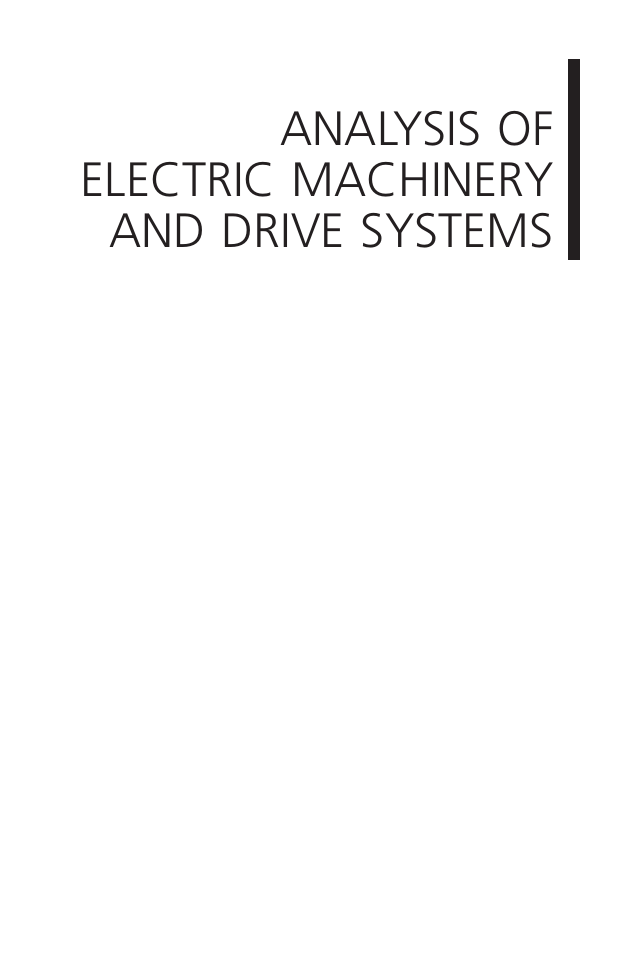
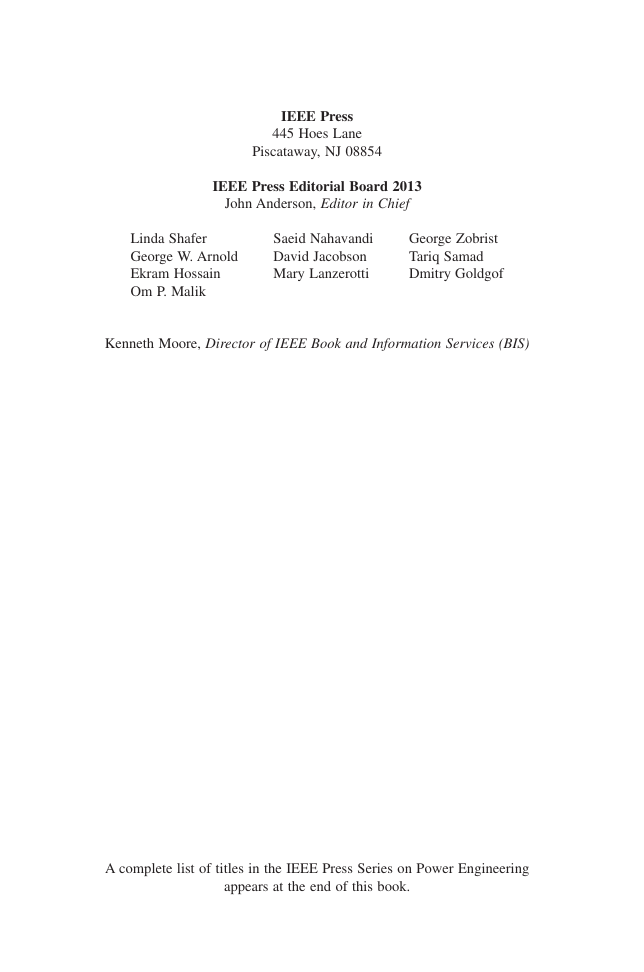
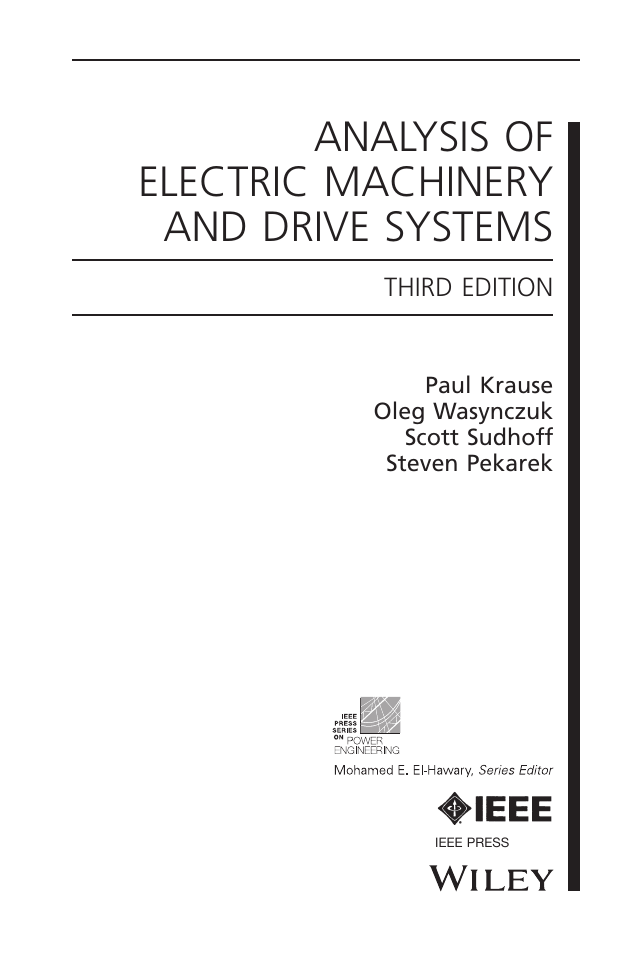

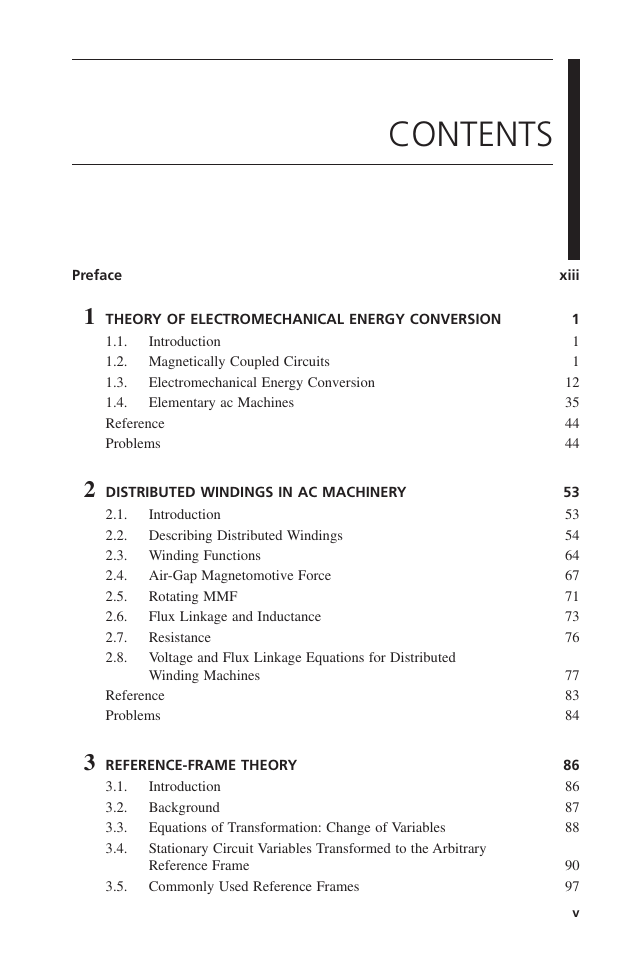
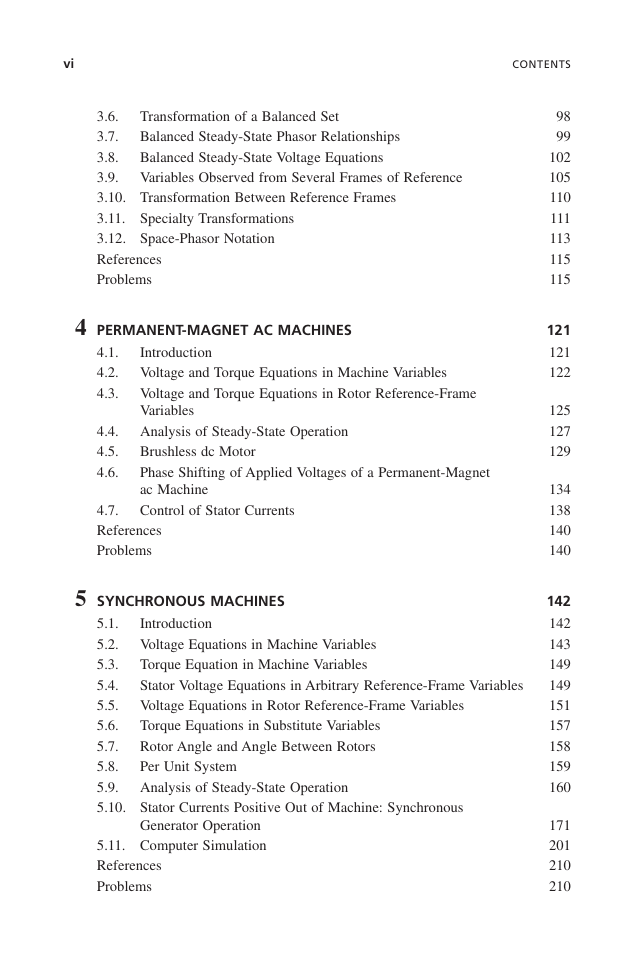
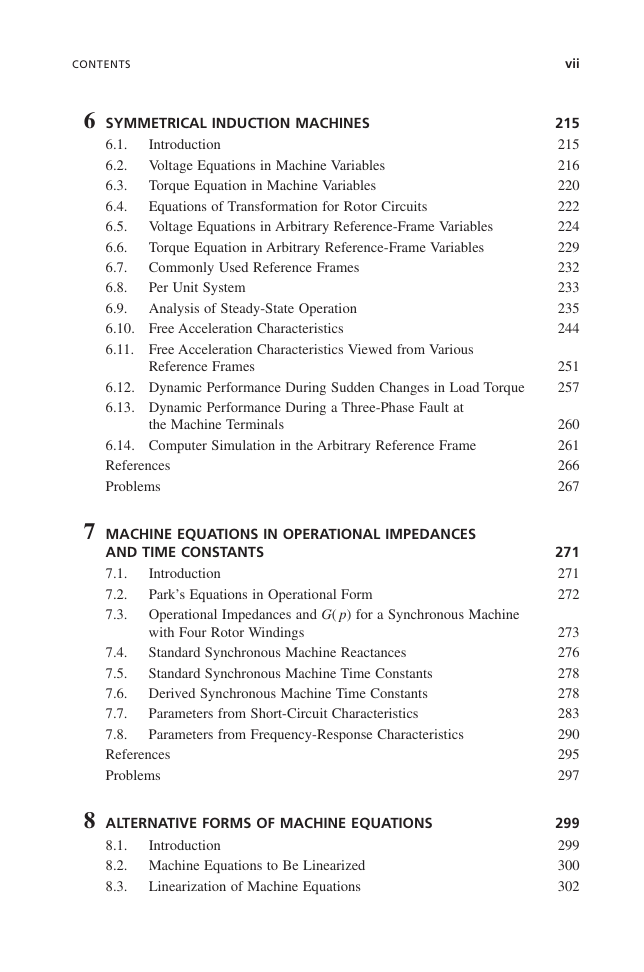
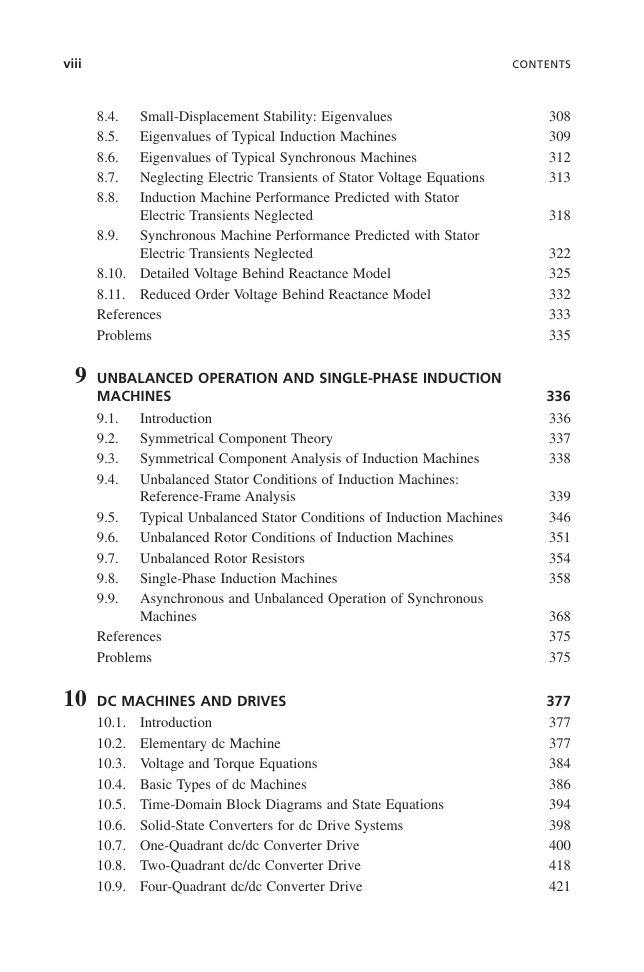








 2023年江西萍乡中考道德与法治真题及答案.doc
2023年江西萍乡中考道德与法治真题及答案.doc 2012年重庆南川中考生物真题及答案.doc
2012年重庆南川中考生物真题及答案.doc 2013年江西师范大学地理学综合及文艺理论基础考研真题.doc
2013年江西师范大学地理学综合及文艺理论基础考研真题.doc 2020年四川甘孜小升初语文真题及答案I卷.doc
2020年四川甘孜小升初语文真题及答案I卷.doc 2020年注册岩土工程师专业基础考试真题及答案.doc
2020年注册岩土工程师专业基础考试真题及答案.doc 2023-2024学年福建省厦门市九年级上学期数学月考试题及答案.doc
2023-2024学年福建省厦门市九年级上学期数学月考试题及答案.doc 2021-2022学年辽宁省沈阳市大东区九年级上学期语文期末试题及答案.doc
2021-2022学年辽宁省沈阳市大东区九年级上学期语文期末试题及答案.doc 2022-2023学年北京东城区初三第一学期物理期末试卷及答案.doc
2022-2023学年北京东城区初三第一学期物理期末试卷及答案.doc 2018上半年江西教师资格初中地理学科知识与教学能力真题及答案.doc
2018上半年江西教师资格初中地理学科知识与教学能力真题及答案.doc 2012年河北国家公务员申论考试真题及答案-省级.doc
2012年河北国家公务员申论考试真题及答案-省级.doc 2020-2021学年江苏省扬州市江都区邵樊片九年级上学期数学第一次质量检测试题及答案.doc
2020-2021学年江苏省扬州市江都区邵樊片九年级上学期数学第一次质量检测试题及答案.doc 2022下半年黑龙江教师资格证中学综合素质真题及答案.doc
2022下半年黑龙江教师资格证中学综合素质真题及答案.doc